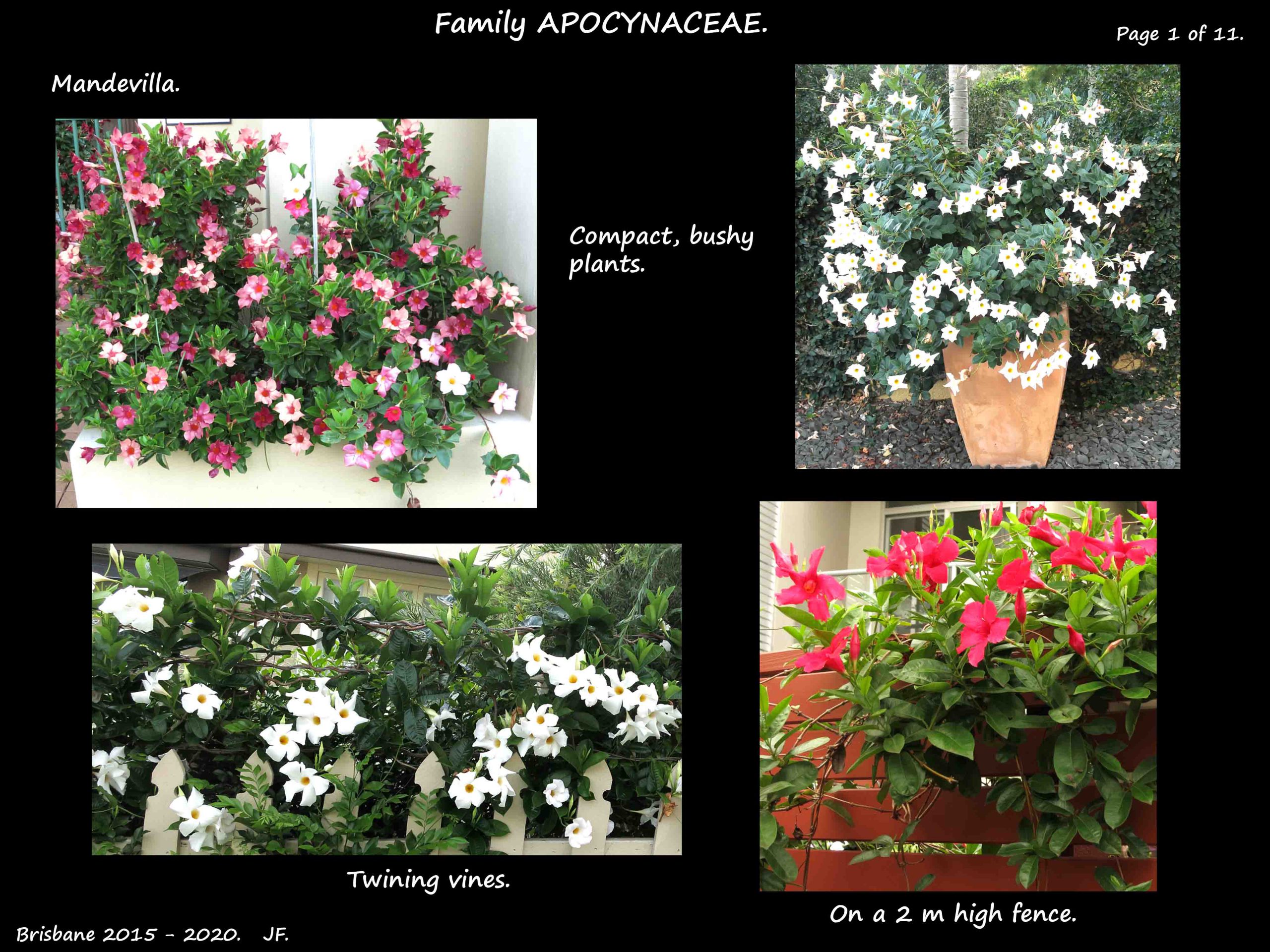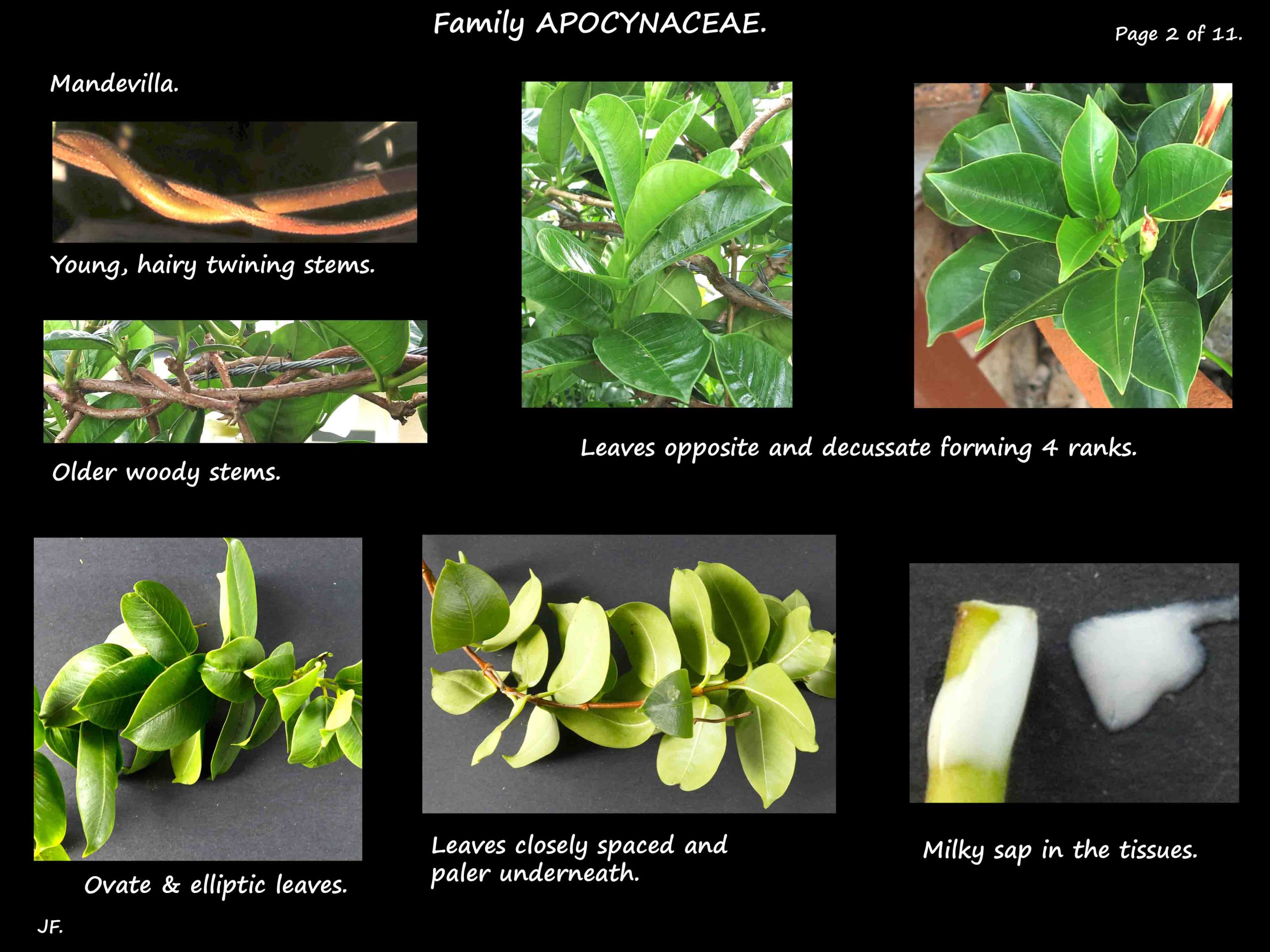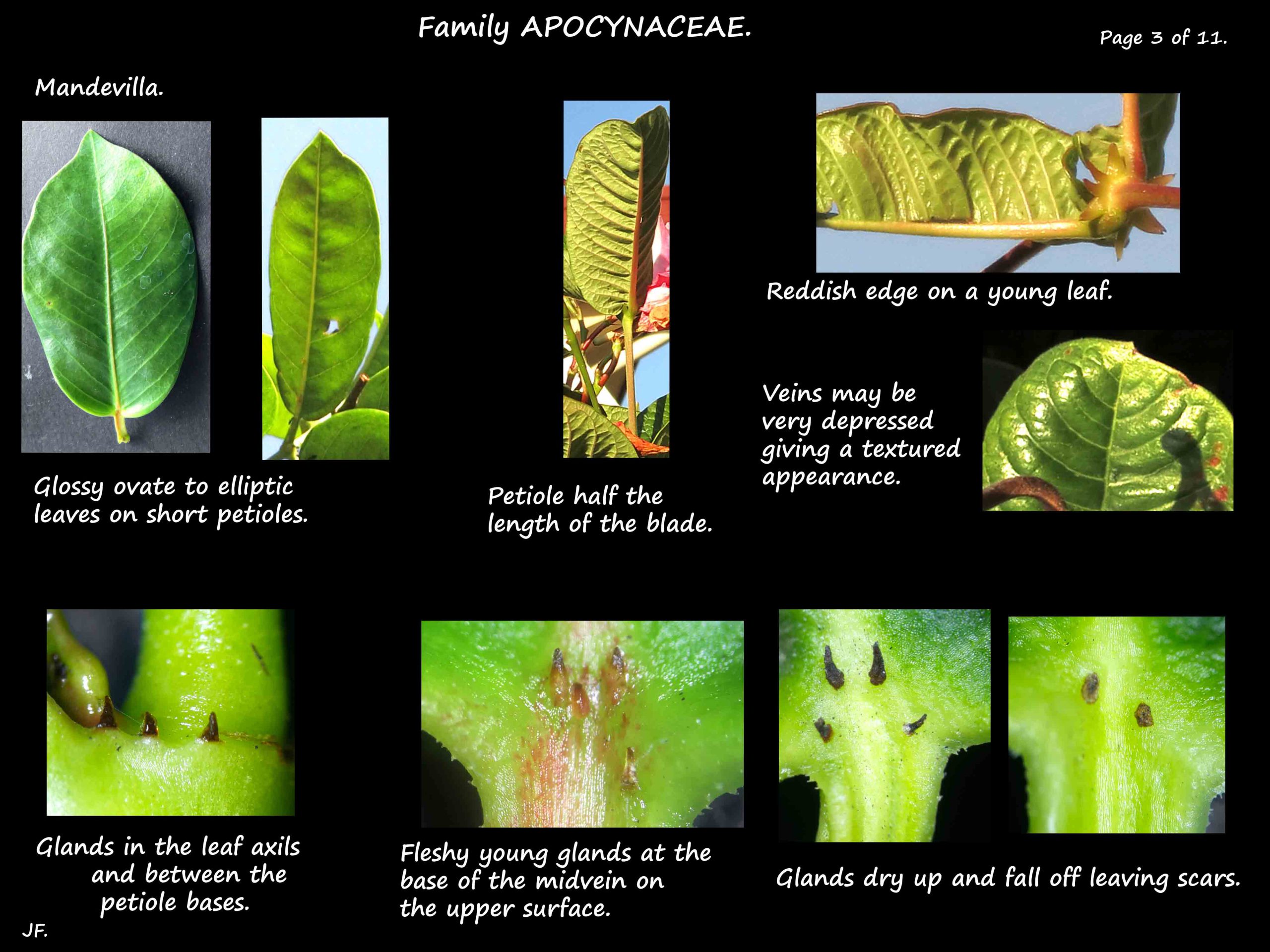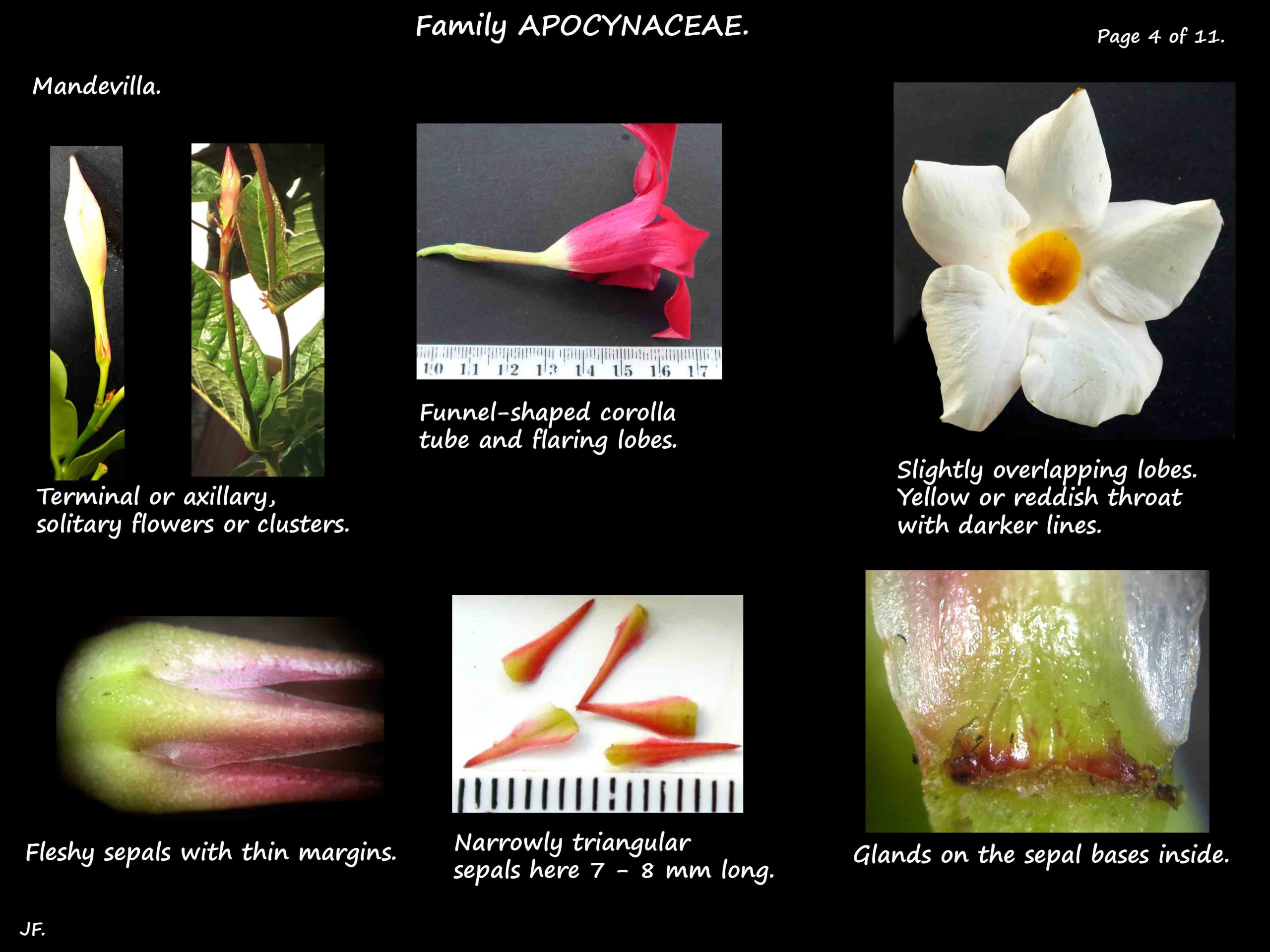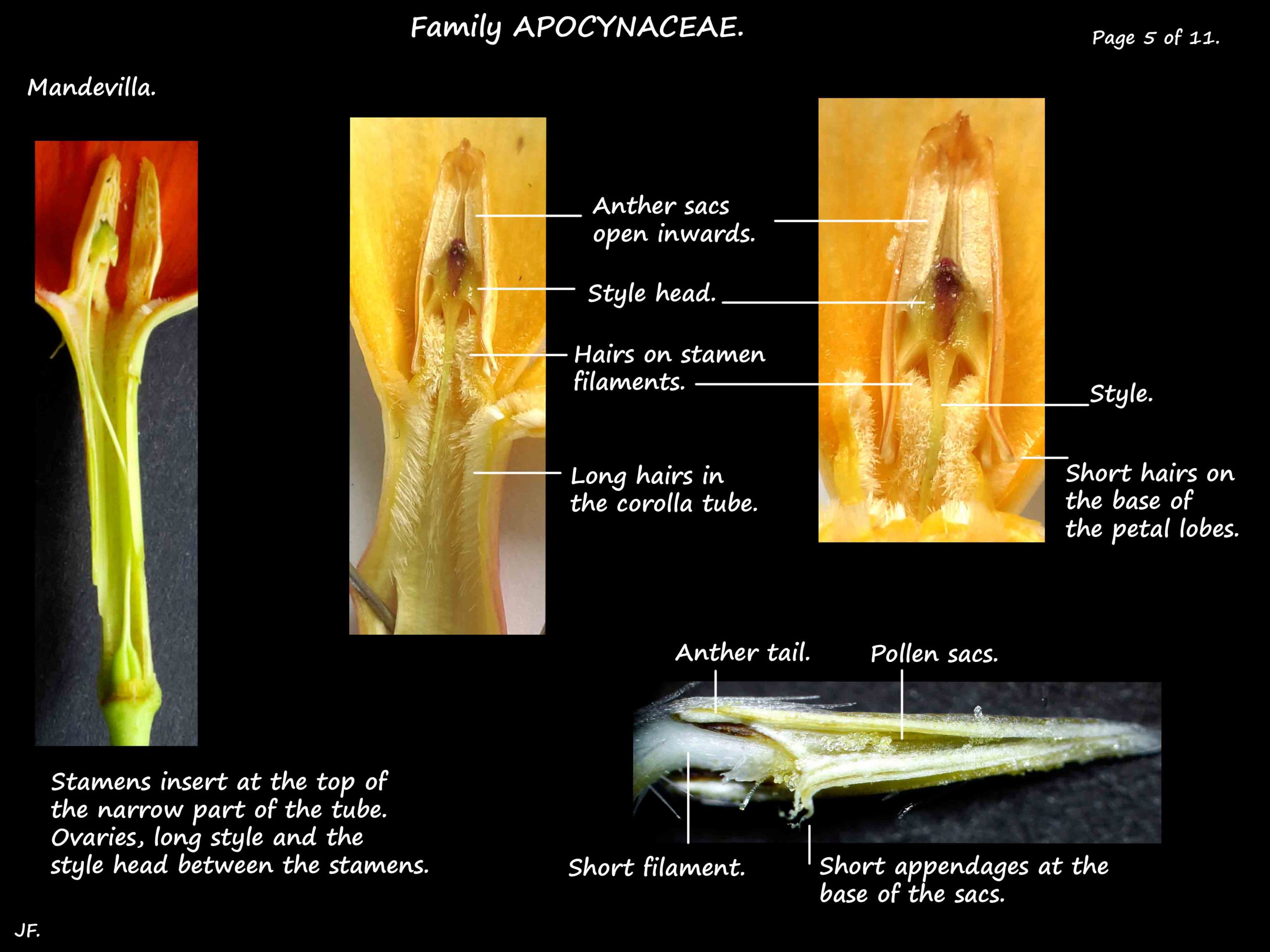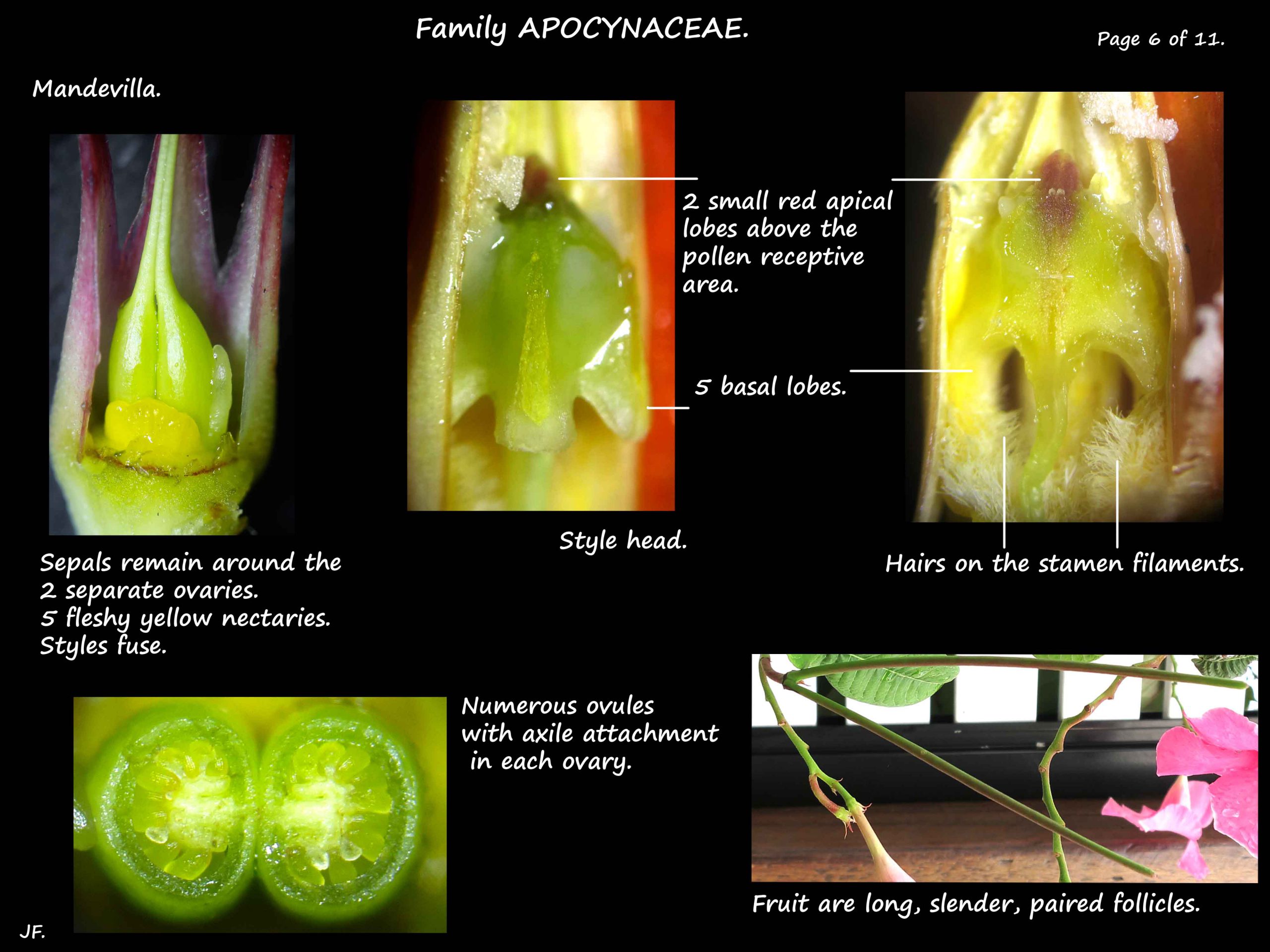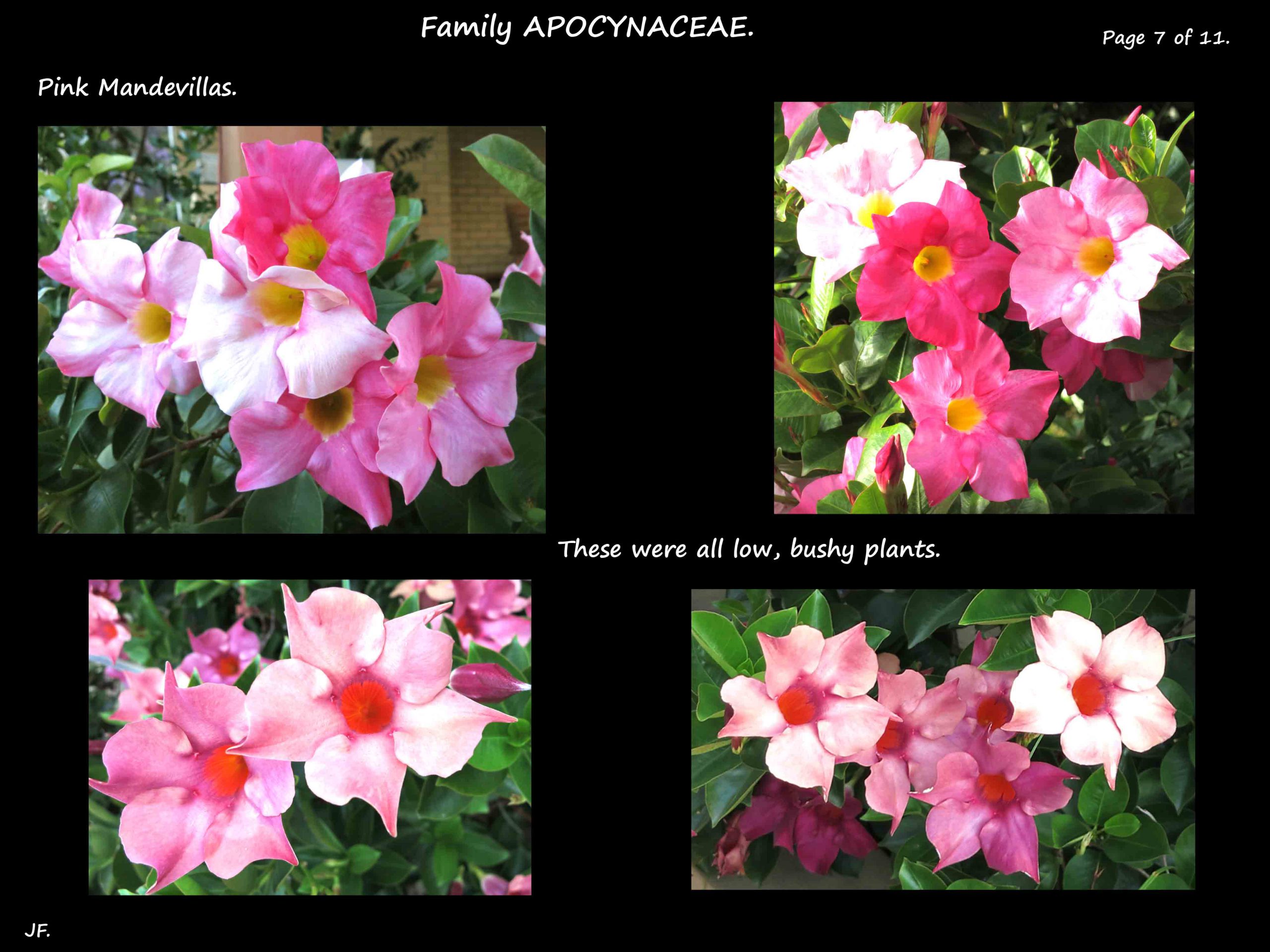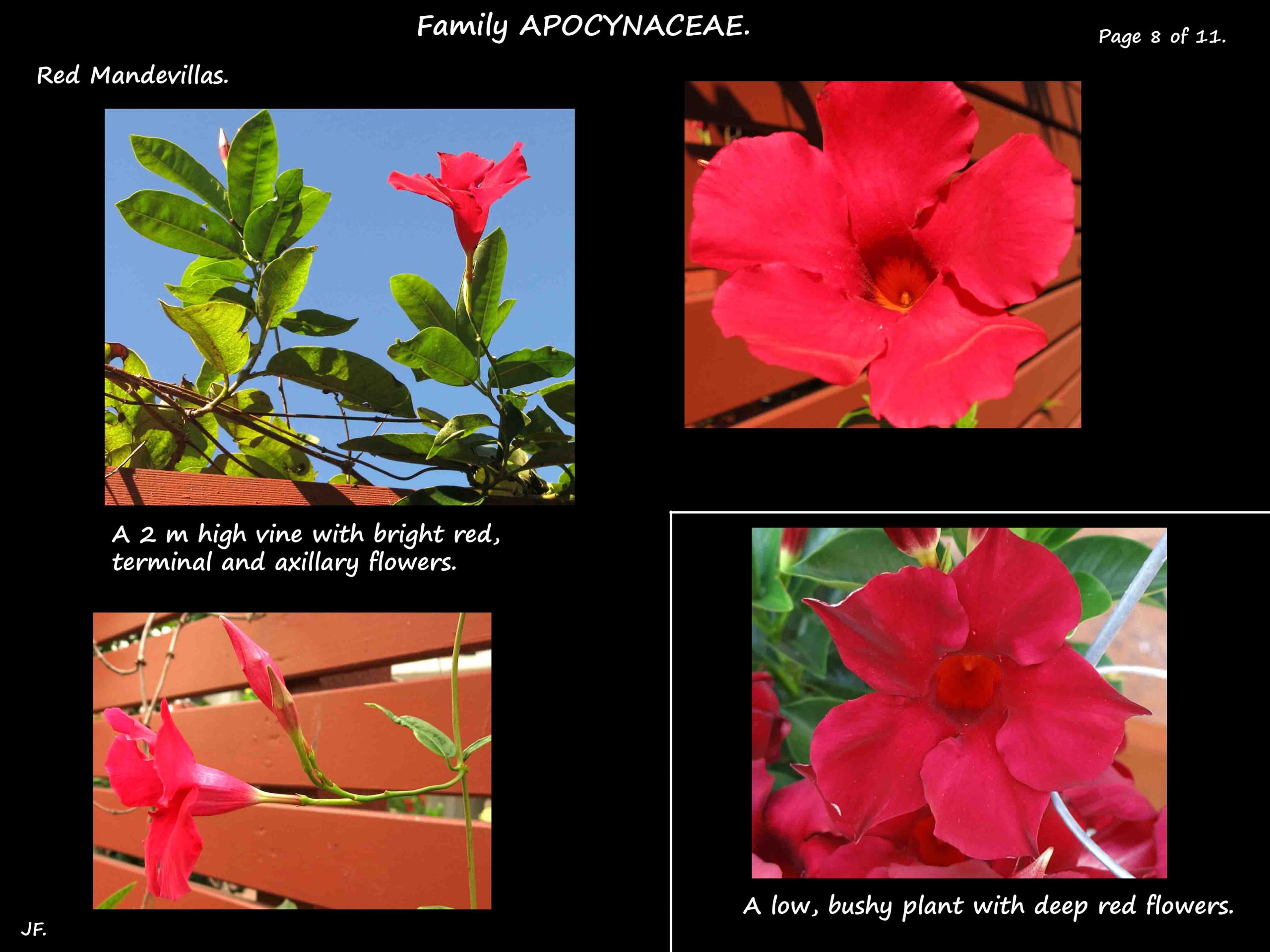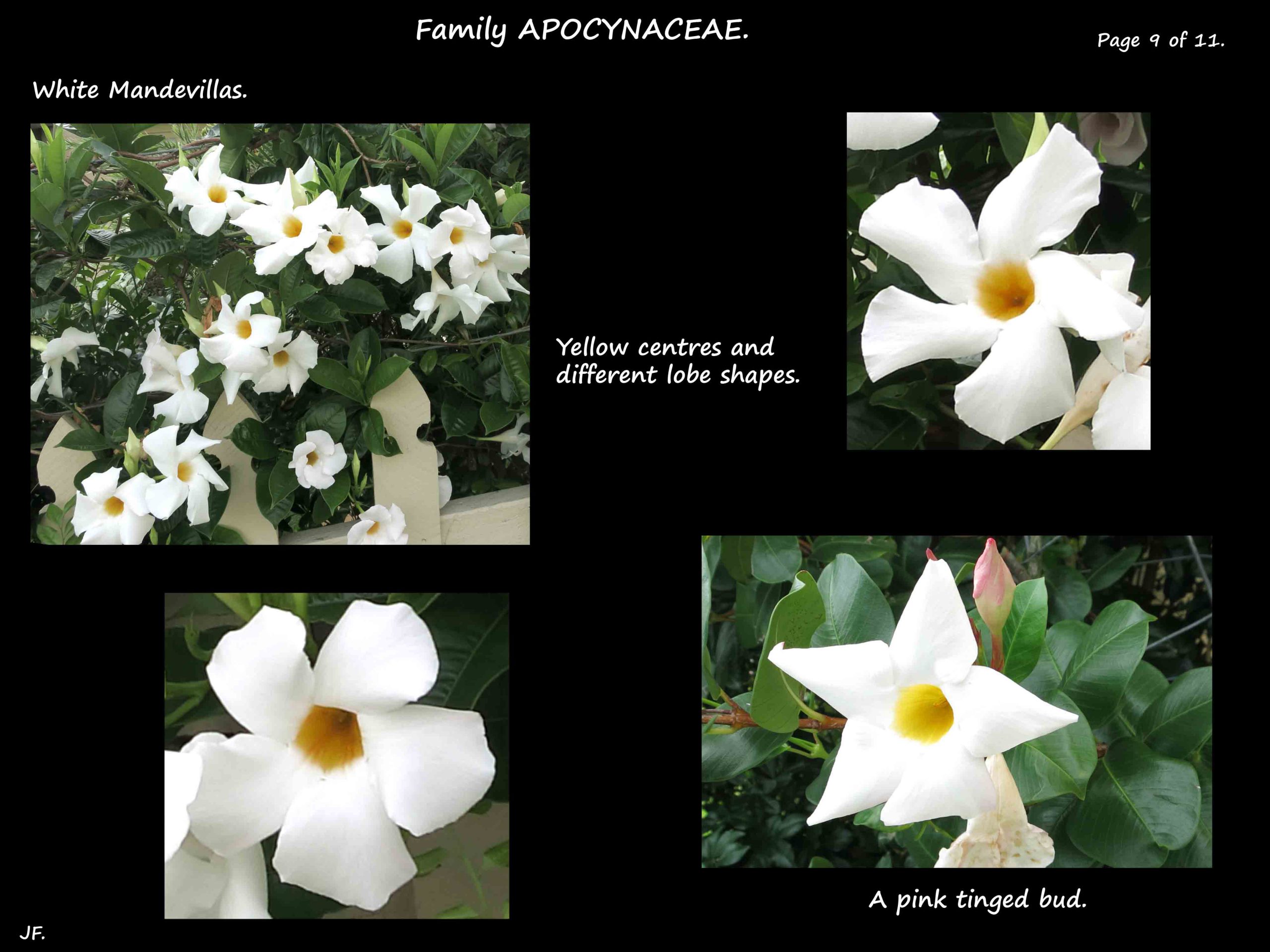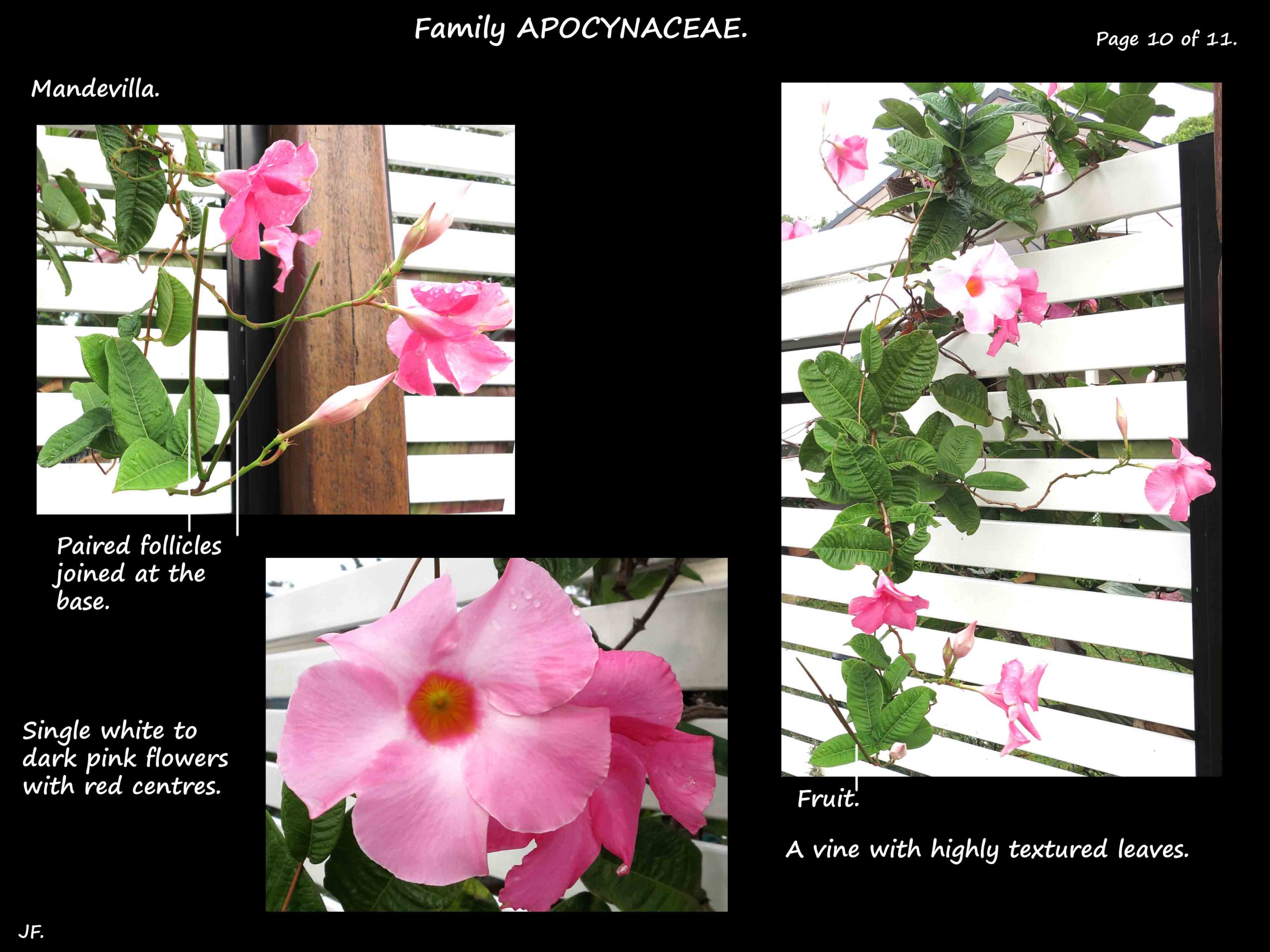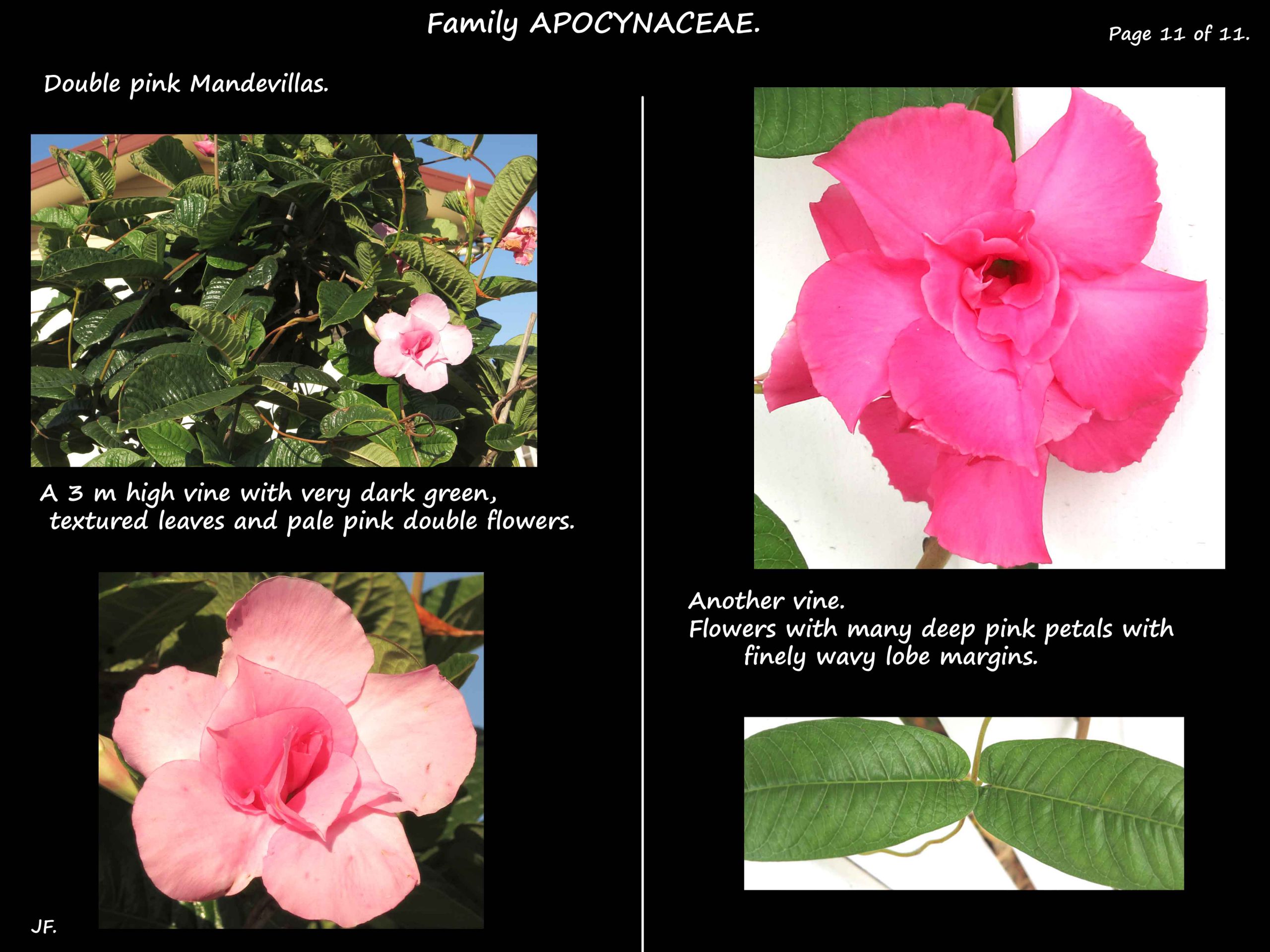Mandevilla.
Family Apocynaceae > Subfamily Apocynoideae > Tribe Mesechiteae.
Around 114 (100 – nearly 200) species with 1 naturalised in Australia (M. laxa).
Dipladenia is a synonym as all those species are now included in the Mandevilla genus.
They are a more compact and bushy form of Mandevilla sanderi.
Mandevillas are twining vines with a white latex in the tissues.
Some are smaller plants suitable for growing in a pot with or without support.
Others are vigorous climbers with stems up to 3 or 4 m long.
The simple leaves, on stalks, are commonly opposite and decussate but can be in whorls.
They are ovate to elliptic and mostly a glossy, deep green.
There are glandular hairs at the base of the midvein on the upper surface and in the leaf axils.
Inflorescences are terminal or axillary and may be a solitary flower or a cluster.
Trumpet-shaped flowers, on long stalks, may appear all year.
Commonly white or shades of pale to deep pink and red there are now cream, apricot and yellow ones.
The throat is yellow or reddish with contrasting lines.
Colours may change as the flower ages.
Flowers, with parts are in 5’s, can be up to 10 cm long and almost as wide.
There are small bracts and bracteoles.
The narrow sepals, to 2 cm long, have glandular hairs at the base inside.
The funnel-shaped corolla tube has a narrow cylindrical base and widening upper section.
The overlapping, ovate to obovate lobes can have rounded tips or short to long points.
The edges may be curled under.
The stamens, on short filaments, are inserted at the top of the narrow section of the tube.
There are short hairs on the filaments and longer ones on the tube below them.
The tufts of hairs above the stamens are much shorter than in Allamandas.
The stamens converge around, but are not fused to, the style head.
The anthers open inwards via long slits and have 2 tails at the base.
There are 2 carpels with the ovaries separate and the stigmas fused into a style head.
Each locule contains numerous ovules with axile placentation.
The large, conical style head has 5 vertical ridges that end in lobes around the base.
There are 2 small lobes at the top.
A white exudate sticks the style head to the stamens but they can be separated without damage.
At the base of the ovaries is a nectiferous disc with 5 fleshy lobes.
The fruit are slender, paired follicles up to 40 cm long.
The numerous seeds have a tuft of hairs.
Commonly seen in gardens are M. sanderi and M. boliviensis and their culivars.
Mandevilla sanderi.
An evergreen vine with twining stems up to 3 or 4 m long.
Young stems are hairy and older ones are woody.
The oval leaves are a glossy, dark green.
Large, trumpet-shaped flowers are shades of red, pink and white.
The cultivar ‘Red Riding Hood’ or Brazilian Jasmine has deep red flowers with a yellow centre.
Mandevilla boliviensis.
A woody, twining vine with clusters of large white flowers with yellow centres.
Mandevilla ‘White Fantasy’ is a hybrid with pink tinged buds.
There are many cultivars and hybrids with a bushy or vining habit.
Flowers can be small to large and single to double.
Some have highly textured leaves and there are a few with variegated leaves.
J.F.

